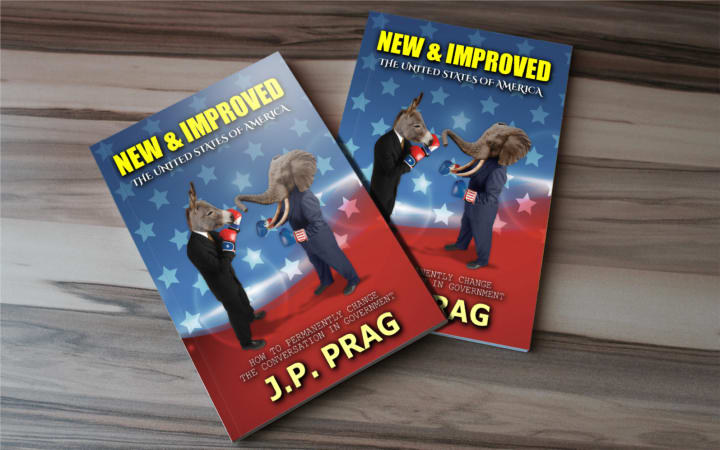
» KEY POINTS
- Before any bill passed by any legislature (State or Federal) becomes law, it should be reviewed by the Courts for Constitutionality and alignment with existing law without the need for anyone to sue.
- All laws should expire after 20 years so they must be re-approved by the current legislature.
- Existing laws older than 20 years would need to expire on a special schedule until all laws are in regular cycles.

While we can change the shape of Congress and help push legislation through, that does not change the quality of those laws nor limit their potential damaging impact. Though there are areas where we want Congress to move quickly, this argument is the reality check to slow things down. In order to accomplish this, we need to add additional clauses to the Constitution.
By Amendment to the Constitution of the United States, Article 1, Section 7, Clause 4 shall be added.
Any bill that thus has been passed by both Chambers of Congress and approved by the President of the United States, or reconsidered by Congress after the President has returned it shall then be sent to the Supreme Court or a Federal Court designated by the Supreme Court. The designated Court will review the bill and confirm that it meets the requirements of the Constitution and other relevant laws. No Bill shall become Law nor be in effect before this review.
Section 7 of the Constitution covers, for the most part, the process by which a Bill moves up to the President for approval or veto. As a matter of interest, the words “veto” and “override” are not part of the Constitution; they are words we have added when discussing these Clauses in order to make them understandable. Instead, the President is to “return” a bill to Congress with objections, and in turn Congress may “reconsider” it with their two-thirds override. Just to be consistent with the original Constitution, we have used the same language in this Clause.
As for this Clause itself, we are talking about another layer of checks before a law goes into effect. Giving the courts the ability to review a law before it is implemented is intended to limit harm and reduce court times. Right now, the government can pass any law and those who believe they would be harmed by it or believe that is violating their Constitutional rights are forced to take on the time and expense of suing, getting an injunction, and fighting that law. Further, all of those resources are going through the entire weight of the government that is responsible for upholding and defending the law. These cases can go on for years and cost significant funds that could be used for other purposes, even when the law is known to be troublesome just to get a court ruling in the first place.
By having the courts review laws before they are in effect will take the burden from average people or organizations and at least have an initial ruling. Now, if there are issues, the courts can return the law to Congress to fix it with their notes — a part of the Constitution that would exist if Article 1, Section 11, Clause 4 from before were added. If the courts are fine or at least find no major issues, then the law will go into effect as written. That is not to say that people or organizations could still not sue and try to have the legislation overturned, but at least the preliminary check would have already been done. In a way, this may allow skipping the long first part of a trial today and immediately get into the appeals process in order to have quicker rulings.
In either case, the main idea is to limit potential harm. If a law can go into effect that causes harm, even if the law is thrown out later much of that harm may be permanent. There is a need to get out ahead of that and hold the government in check in order to protect people. However, Federal Law is only a small part of these issues.
By Amendment to the Constitution of the United States, Article 1, Section 7, Clause 5 shall be added.
Any law that has passed the local process within each State or Territory shall be reviewed by the Federal Court designated by the Supreme Court before the law may go into effect. The designated Federal Court shall review that the new law does not violate the Constitution, existing Federal Law, existing State or Territory Law, or prior judicial interpretation of the law. Should the law be found in violation thereof, the Courts shall return the law to the State or Territory and not allow the law to go into effect.
Law that is passed at the State/Territory level is usually where these issues arise the most, especially when the State/Territory wants to challenge Federal Law or prior court rulings. Basically, this Amendment is an attempt to stop the States and Territories from creating a law that they know is against the Constitution, Federal Laws, or existing court decisions and waste the time and resources of the taxpayers and those who would be potentially harmed. That does not mean that States and Territories cannot challenge Federal Law or court rulings, but that creating contradictory law is not the appropriate venue to do so.
The Constitution is silent on how States and Territories are to function (save for being a “Republican Form of Government” in the case of States as laid out in Article 4, Section 4) and how laws are passed in each. Because of this, all the Courts can do is send the law back to State/Territory and say that it cannot pass. It is then up to the State/Territory to do whatever process they feel is necessary because State’s rights are protected by other parts of the Constitution. While we have a laid out a specific methodology for the Federal Government, whatever happens at the local level is beyond the purview of the Constitution and the courts.
With that all said, there still needs to be a way to make sure laws can be challenged further. Just because something was passed into law a hundred years ago does not mean that it is valid today or that it would be written in the same way. That is why as an effort to make sure legislation happens within Congress and not the courts, another Amendment is needed to bring laws up for regular review.
By Amendment to the Constitution of the United States, Article 1, Section 7, Clause 6 shall be added.
Any law that has been put into effect shall expire twenty years past the day it was put into effect, unless another date prior to twenty years has been set for its expiration. The law must be repassed via the process as laid out for a new Bill by the Constitution and relevant law prior to expiration in order to remain in effect.
Upon the passing of this Amendment, all existing laws shall expire on a schedule unless another date had already been set for its expiration within twenty years of its passing. Those laws that have passed in the prior twenty years shall come up for expiration as if this Amendment were already in effect. For those laws that passed prior to twenty years before this Amendment has gone into effect, each shall expire in the proceeding ten years such that the last digit of the year the law was originally passed in becomes the year in which the law shall expire.
We can call this the “Time Limit” Amendment for laws. Right now, there are laws on the books at the Federal and State/Territory levels that have been there for hundreds of years yet are not enforced or are patently un-Constitutional. However, someone could still be arrested for these laws and resources must be spent one way or another to keep them on the books. As an example, this is a real Federal Law that you could be found criminally guilty of:
TITLE 21 — FOOD AND DRUGS
CHAPTER I — FOOD AND DRUG ADMINISTRATION
DEPARTMENT OF HEALTH AND HUMAN SERVICES
SUBCHAPTER B — FOOD FOR HUMAN CONSUMPTION
PART 102 — COMMON OR USUAL NAME FOR NONSTANDARDIZED FOODS
Subpart B — Requirements for Specific Nonstandardized Foods
Sec. 102.39 Onion rings made from diced onion.
(a) The common or usual name of the food product that resembles and is of the same composition as onion rings, except that it is composed of comminuted onions, shall be as follows:
(1) When the product is composed of dehydrated onions, the name shall be “onion rings made from dried diced onions.”
(2) When the product is composed of any form of onion other than dehydrated, the name shall be “onion rings made from diced onions.”
(b) The words “made from dried diced onions” or “made from diced onions” shall immediately follow or appear on a line(s) immediately below the words “onion rings” in easily legible boldface print or type in distinct contrast to other printed or graphic matter, and in a height not less than the larger of the following alternatives:
(1) Not less than one-sixteenth inch in height on packages having a principal display panel with an area of 5 square inches or less and not less than one-eighth inch in height if the area of the principal display panel is greater than 5 square inches; or
(2) Not less than one-half the height of the largest type used in the words “onion rings.”
How many of these are there? What even is the criminal code the United States? The answer is: we do not know! When Congress last tasked itself in 2013 to have a complete and organized listing of all laws, the Chairman of the House Over-Criminalization Task Force Jim Sensenbrenner said that they “lack the manpower and resources to accomplish this task.” In other words, Congress does not even know what the law of the land is and cannot tell the Executive Branch what it is supposed to enforce!
Some people like to poke fun at the extreme specificity of some of these laws, but when you get into it one can see there are often intentions of safety, security, or other concerns that are just being overdone by someone who had a very, very specific situation. Other times, though, we do end up with rules on how to name different types of onion rings.
No matter the source or reasoning, a law should be reviewed on a regular basis for many reasons, not limited to:
- Validation: Make sure the law is still valid in today’s environment or has not been superseded by another law.
- Clarity: In the time since the law was written, maybe specific cases or situations came up that require further clarification of intent.
- Closing Loopholes: A law may be able to be circumvented for reasons not seen before and can be made better.
- Removing Unnecessary Features: Perhaps a well-meaning law just got too much into the weeds and needed to be pulled back in order to allow leeway with execution.
- Never Enforced: A law was so impractical or the situation unlikely that it was impossible to even enforce the law.
- Not Needed or Desired: Societal norms and desires change over time and perhaps a law should be discarded entirely just for that.
Also, if we take this approach then all laws will eventually go through the court-level approval process from above (assuming it passes Congress and the President). As such, everything will get a further Constitutional review along with a check against all other law. In the end, this would be a great way to clear out old law and have a more reasonable, understandable, compact, and controlled penal code.
One thing to note from the way this is written is that a law expires 20 years from the date it is put into effect. Many laws are written with specific start dates, so those laws would not be due until they started as authored. Similarly, if at any point a law is modified then it is new again and countdown would restart. There is nothing in this that says laws cannot be revisited off-cycle, just that they must be visited on-cycle. In a similar point, some laws are already written with expiration dates (an annual budget, for instance), so those would not need to be revisited.
The real trick will be the first twenty or thirty years that this is applied because the workload would be tremendous for Congress. Of course, they would have the regular business of Congress in any year, and then on top of that they would have the laws expiring that had been passed in the last 20 years. Laws older than that, though, would require a great amount of time. Let us say this Amendment were passed in 2030. Then, in 2031, Congress would have to review laws passed in 2011 plus all the laws passed in 2001, 1991, 1981, 1971, etcetera, all the way back to 1791. Thankfully there are fewer and fewer Acts the farther back in time one gets.
Again, though, Congress’s job is to legislate, and this will keep them very busy with doing just that. After 20 years — roughly the length of a generation — new members of Congress may be in play and all the same laws can be reviewed with a fresh light. While much of what has been put in place before this has been about keeping others out of the legislative process, this is the case where we are attempting to keep Congress within its own boundaries and busy with regular duties.

The above piece is a mildly modified excerpt from New & Improved: The United States of America by J.P. Prag, available at booksellers worldwide.

Learn more about author J.P. Prag at www.jpprag.com.

An earlier version of this article appeared on Medium.
About the Creator
J.P. Prag
J.P. Prag is the author of "Compendium of Humanity's End", "254 Days to Impeachment", "Always Divided, Never United", "New & Improved: The United States of America", and "In Defense Of...", and more! Learn more at www.jpprag.com.






Comments
There are no comments for this story
Be the first to respond and start the conversation.